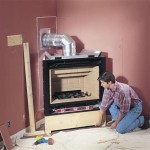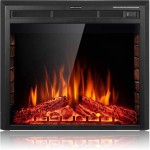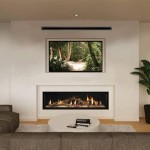How to Get Rid of Bats in My Fireplace
Discovering bats residing in a fireplace can be a disconcerting experience for homeowners. Beyond the potential for fright, bats can introduce health risks and structural concerns if left unaddressed. This article outlines a comprehensive strategy for safely and effectively removing bats from a fireplace, emphasizing humane methods and preventative measures.
Understanding the Problem: Why Bats Choose Fireplaces
Bats seek shelter in dark, secluded spaces, and fireplaces can often provide an ideal habitat, particularly during roosting season. The chimney acts as a natural conduit, leading to the relative darkness and safety of the firebox. Open dampers, cracks in the chimney lining, or a lack of a chimney cap all contribute to the accessibility of the fireplace to bats.
Several factors attract bats to fireplaces. Temperature regulation plays a significant role; chimneys can offer a stable environment, protecting bats from extreme weather conditions. Furthermore, the structure of the chimney can mimic natural roosting sites, such as caves or hollow trees. Finally, fireplaces that are rarely used are more likely to attract bats, as the lack of human activity creates a more undisturbed environment.
Identifying the species of bat involved is crucial. While many bat species are relatively harmless, some can carry diseases, such as rabies. Furthermore, certain bat species are protected under federal or state laws, requiring specific removal procedures. Consulting with a local wildlife professional is recommended for accurate identification and adherence to local regulations.
Implementing a Safe and Humane Removal Strategy
The primary goal in removing bats from a fireplace should be to do so humanely, minimizing stress on the animals and avoiding any action that could harm them. Exclusion is the preferred method, preventing bats from re-entering the fireplace without causing them injury.
Before undertaking any removal efforts, it is essential to thoroughly inspect the fireplace and chimney for entry points. This includes examining the chimney cap, mortar joints, and flue liner. Any cracks or openings should be documented for later repair. A flashlight and binoculars can be helpful for this inspection.
The most effective method for bat removal from a fireplace is using a one-way exclusion device. This device allows bats to exit the fireplace but prevents them from re-entering. Various types of exclusion devices are available, including netting, tubes, and pre-fabricated cones. The chosen device should be appropriately sized for the chimney opening and securely attached to prevent bats from circumventing it.
Installation of the exclusion device should occur during a period when bats are actively leaving the roost, typically at dusk. This ensures that the majority of bats are outside the fireplace before the device is installed. Installing the device during daylight hours may trap bats inside, potentially leading to their death or distress.
The time of year is a critical factor in bat removal. During the spring and summer months, bats may be nursing young. Removing bats during this period can result in the abandonment of baby bats, which are unable to survive on their own. It is generally recommended to avoid bat removal during the maternity season, which varies depending on the region and bat species. Contacting a local wildlife professional can provide specific guidance on the optimal time for removal.
Once the exclusion device has been in place for a sufficient period, typically one week, to ensure that all bats have left the fireplace, it can be removed. A thorough inspection of the fireplace is then necessary to remove any remaining bat droppings (guano) and other debris. Guano can pose a health risk and should be handled with care, wearing appropriate personal protective equipment (PPE), such as gloves and a respirator.
Cleaning the fireplace involves using a HEPA-filtered vacuum cleaner to remove guano and debris. Surfaces should then be disinfected with a solution of bleach and water or a commercially available disinfectant specifically designed for bat guano. It is important to follow the manufacturer's instructions for the disinfectant and to ensure adequate ventilation during the cleaning process.
Preventing Future Bat Infestations in the Fireplace
After successfully removing bats from the fireplace, implementing preventative measures is essential to avoid future infestations. These measures focus on sealing entry points, maintaining the fireplace, and creating an inhospitable environment for bats.
The most critical preventative measure is to seal any cracks or openings in the chimney and fireplace structure. This includes repairing damaged mortar joints, patching holes in the flue liner, and ensuring that the chimney cap is in good condition and properly installed. A chimney professional can inspect the chimney and recommend appropriate repairs.
Installing a properly fitted chimney cap is crucial for preventing bats and other animals from entering the chimney. The cap should be made of durable material, such as stainless steel, and should have a mesh screen that prevents entry while allowing for proper ventilation. The screen should be regularly inspected and cleaned to ensure that it remains effective.
Maintaining the fireplace and chimney is essential for preventing future bat infestations. Regular inspections should be conducted to identify any potential entry points or damage. The fireplace should be cleaned regularly to remove creosote and other debris, which can attract bats and other pests. Professional chimney sweeps can provide thorough cleaning and inspection services.
Modifying the environment around the fireplace can also help deter bats. Keeping the area well-lit can discourage bats from approaching the chimney. Trimming trees and shrubs that are close to the chimney can eliminate potential roosting sites and make it more difficult for bats to access the fireplace. However, it is important to consider local regulations regarding tree trimming and to avoid disturbing nesting birds or other wildlife.
Another preventative measure is to use mothballs or other repellents in the fireplace. However, this method is generally not recommended, as mothballs can be toxic to humans and pets. Furthermore, the effectiveness of repellents in deterring bats is questionable. If repellents are used, they should be placed in a sealed container within the fireplace to minimize the risk of exposure.
Consider consulting with a local wildlife professional for further advice on preventing bat infestations. Professionals can assess the specific situation and recommend tailored solutions based on the local environment and bat species. They can also provide ongoing monitoring and maintenance services to ensure that the fireplace remains bat-free.
In conclusion, safely and effectively removing bats from a fireplace requires a combination of humane exclusion methods, thorough cleaning, and preventative measures. By understanding the factors that attract bats to fireplaces and implementing appropriate strategies, homeowners can protect their property and ensure the well-being of these important nocturnal mammals.

Bats In The Chimney How To Get Out Of

Bats In The Chimney How To Get Rid Of Remove

Got Bats In Your Chimney Flue Full Service

How To Remove Bats From The Chimney

Bats In The Chimney What To Do Living Cavity

How To Keep Bats Out Of Your Chimney

What To Do About Bats In The Chimney

Got Bats In Your Chimney Flue Full Service

Got Bats In Your Chimney Flue Full Service

This Is How To Get Rid Of Bats In Your Chimney Dreifuss Fireplaces
Related Posts








